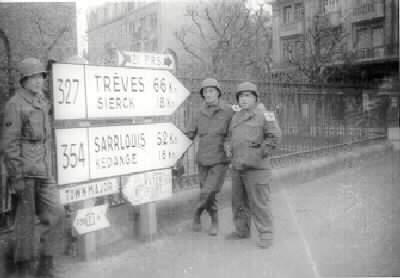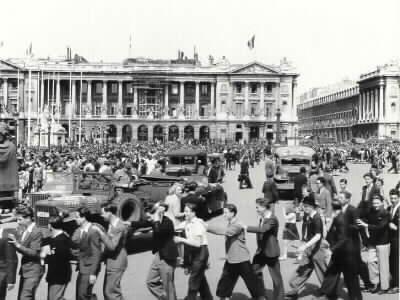Rolland Royer
Era: World War II
Military Branch: Army


Mr. Royer was trained as a medic. He was then assigned to Europe as a medical specialist. He left the United States on December 18, 1944, arriving just after Christmas (December 27) 1944, during the Battle of the Bulge.
Mr. Royer (see first photo) grew up in West Duluth. He graduated from St. Jean’s High School in 1943.
After working at a local shipyard for about six months, he was inducted into the Army during World War II, on November 11, 1943.
Mr. Royer was trained as a medic. He was then assigned to Europe as a medical specialist. He left the United States on December 18, 1944, arriving just after Christmas (December 27) 1944, during the Battle of the Bulge.
Serving on a Medical Train
Once in Europe, Mr. Royer was assigned to the 77th Hospital Train Unit, which treated and transported wounded U.S. military personnel from field hospitals to general hospitals in Europe and to hospital ships in the ports of LeHavre and Cherbourg; they evacuated patients to ships to return to the United States. Many of their patients had been wounded in the Battle of the Bulge.
During Mr. Royer's time on the train, it traveled through France, Germany, and Belgium.
Royer said there were 17 medical personnel specialists on the train, including a doctor, four nurses and a pharmacist. The specialists like Royer gave medication, changed bandages, checked blood pressure and provided other medical services. “We were about an inch short of being male nurses,” he recalls. “We lived on the train.”
The train was made up of ten cars or less. The litter car had beds three high.
The saddest case Mr. Royer handled was a 19-year-old new replacement soldier who lost both hands and his eyesight to a German hand grenade.
Creating a Photographic Record
But what made Royer’s wartime experiences unusual was that he was an experienced photographer and was able to document his experiences in France, Belgium, and Germany during the 11 months he was there. He took photos wherever they went. “The train was our home.” Besides recording some of the devastation of war, the photos show Americans in the medical unit relaxing during brief breaks in their duties.
The strongest photos show the youngsters who gathered around the train when it stopped to pick up the wounded near Stuttgart, Germany. He says the young people would beg for food and offer to wash clothing of the Americans in exchange for food. The medical personnel were happy to oblige them.
In the Rhineland, most of the children were a combination of French and German. They were friendly to the Americans.
After the War
After the war ended, Royer’s unit transported wounded soldiers to hospital and on return trips carried wounded Germans, who had been prisoners of war (POWs) of the Allies, back to Germany.
Royer left Europe on November 19, 1945. He was discharged on January 29, 1946. His highest rank was T-5 Medic.
When Mr. Royer returned to the United States, he had prints made of his photographs.
Following the war, Royer worked briefly as a beautician before joining the Duluth Water and Gas Department. He started in 1947 as a meter reader and retired in 1982 as superintendent of the service department.
Source: Discussion with Virgil Swing, Veterans’ Memorial Hall; Veterans’ Memorial Hall Veteran History Form; veteran’s account (see below)
“One of seven brothers that served their country; 3 Army; 2 Navy; 2 Marine.”

